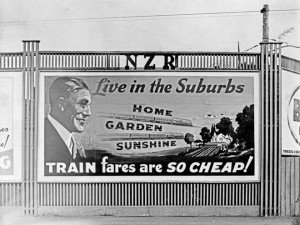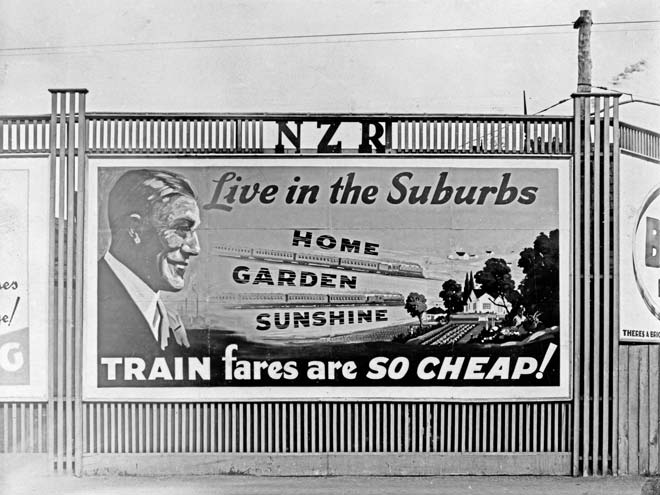 There is no question, public transport fares in New Zealand – generally speaking – are too high. Especially in Auckland.
There is no question, public transport fares in New Zealand – generally speaking – are too high. Especially in Auckland.
Our fares are much higher than most comparable cities, which offer better services and have higher patronage.
Two factors may be responsible for our higher fares. Firstly, the decision to privatise the bus operations in 1989/90 had the perverse effect of creating profit-making oligopolies that drastically cut costs and eroded levels of service. Costs per passenger initially dropped because of staff layoffs, driver “productivity” supposedly increased because they were forced to drive longer hours. Patronage also collapsed at this time. It has taken several decades to get it back to 1990 levels.
Privatisation was sold as a way to make things more competitive and efficient, but when introduced to just part of the overall transport network, it did the exact opposite. Even Treasury recognises the “reforms” did not resulted in a competitive environment. Average tenders for public transport service contracts in Auckland in 2004/05 was 1.3, and in Wellington about 1.1. This is not a competitive market – it is one where a few players dominate and make healthy returns.
This should have been obvious to anyone who purports to understand economics. Transport infrastructure has certain natural monopolistic characteristics, and prices across the entire network are very indirect. Rather than operators competing against each other to deliver better service, they “compete” against the private car, which is heavily subsidised through a variety of local and central government policies. Why would a private bus company worry about increasing patronage, when they don’t have to compete to get a long term contract that allows them to continue providing mediocre service and get well paid for it?
It is possible to effectively introduce competition in the operation of public transport services to get better outcomes for users and taxpayers, but there needs to be public ownership of the essential infrastructure (like bus depots), and probably the vehicles as well. In Perth they have 5 or more tenders per contract, because the depots and vehicles are essentially publicly owned. (We would also need to ensure that operators weren’t able to compete by eroding wages or working conditions!)
The second reason fares are high and unlikely to drop anytime soon is because the New Zealand Transport Agency (under the stewardship of Steven Joyce) introduced a completely ideological and very harmful policy on Farebox Recovery, which creates a completely arbitrary and exceedingly high requirement for half the cost of the service to be recovered by fares. The policy’s costs outweighed the benefits, particularly in Auckland, but the government stuck with it – determined to see public transport users “pay more of their own way”, completely ignoring the reality that 1) private cars are heavily subsidised, 2) every additional person taking public transport reduces transport expenditure elsewhere; it reduces pressure on the roads, reduces the need for car parking, and reduces the portion of our current account deficit going on petrol and private vehicles.
Reducing fares can have huge benefits, but, I doubt it would be the best use of public money to make all public transport free. Last week I blogged about the importance of increasing access, not just blindly subsidising mobility. Making transport free to users would likely result in people taking more trips and travelling further than they otherwise would, which could be detrimental to local economies that could otherwise be supported by walking and cycling. It can encourage urban sprawl (though not quite as costly as car-dependent urban sprawl).
Making public transport free is unlikely to be much use to many low-income people who work shifts or in areas that are currently poorly served by public transport, and it may disproportionately benefit those who can afford to pay. The latest data from the Household Economic survey seems to suggest that the highest income people have increased their spending on public transport the most over the last few years. It could also result in overcrowding on peak services that are already stretched. Given the sunk investment in integrated ticketing and smart cards, the operational benefits of going fare free are reduced.
We definitely need to cut fares across the board, first by ditching the ridiculous Farebox Recovery policy and aiming for fares that grow patronage and give us the optimal social, environmental and economic benefits. This may include some fare-free zones. Secondly, we need to invest a lot more in infrastructure and services, especially in disadvantaged communities. We can target fare relief to beneficiaries, young people and students, and low-income households with something like the gold card, but it may be more effective to increase incomes at the bottom, rather than subsidising transport in particular. Increasing access is more about creating affordable and sustainable communities that are designed to serve local people, which may be a critical step in rebuilding social democracy and healthy civic engagement.






I recently attended the Sustainability workshop by Generation Zero – and the cost of fares was one of the questions from the audience.
Both Chris Darby (North Shore Councillor), and Matt Lowie (Auckland Transport Blog) were quick to respond that price was not a reason why most people did not use public transport. And they referred to a study which supported that statement.
By that stage, I had had a few (Really?) moments during the morning – so I just silently had another.
Given the disparity of income between those involved in these decisions, and those impacted by it, it is painfully obvious that sometimes those decision makers are unable to envision the constraints that may hinder the long-term success and wider benefits that they intend.
Cost is a significant factor for many – I have no idea what the survey demographic was – but I am guessing it was not reflective of the diversity of Auckland.
I’d forgotten about the Farebox thing.
Re: free for beneficiaries – if you do it like the gold card (ie not rush hour) you can a) generate more non-rush-hour usage, making for more efficient deployment of staff and vehicles, and b) reduce the need for benefits to be eaten up running expensive cheap cars.
We were just in Perth, by the way, and yes the fares struck us as very cheap. There’s still widespread resistance to public transport among the ‘haves’, though, which must impact on policy long-term.
Good article. Fares have been going through the roof in Wellington in recent years as well, the Snapper fares having been increased yet again this month. Apparently small increases every year are so we don’t get hit with a massive hike all in one go…
It’s never publicised, but there is a beneficiary pass (Invalids benefit only,) for the Go Wellington buses for off-peak use, ie 9-4 and after 6 Mon-Fri, all day weekends. You need a WINZ letter confirming you’re on IB, take it to the Wgtn City Council service centre and they’ll give you the pass. As I said, this doesn’t seem to be publicised, only word of mouth so I guess they don’t want too many of us knowing about it. But as someone who can’t even drive (medical ban) that pass makes a major difference to how often I can go places within the city.
I do think there should be some sort of transport concession card we can use nationally. I’d like to see some sort of pass for all beneficiaries, but I’m not sure how that could practically work for those on short-term benefits unless they could be renewed on a say, 3-monthly basis rather than yearly like the Go Wgtn pass.
And I’m still bemused that Auckland still thinks it has a public transport system. While it’s improved greatly since the time I had to live there- and was completely stranded- , it’s still a total nightmare to get around. face it, Auckland’s designed for cars.
Thanks for these Transport posts, Julie Anne. Commuters to Wellington from Manawatu, Horowhenua and Kapiti are being told to use the Capital Connection train or lose it. To encourage them they are putting the fares up 10%. The TA refuses to subsidise it (it is apparently not a’proper’ commuter train) but are busy spending billions on autobahns through some of the same territory so ‘commuters’ from Levin can get to the airport a few minutes more quickly by road.
Comments are closed.